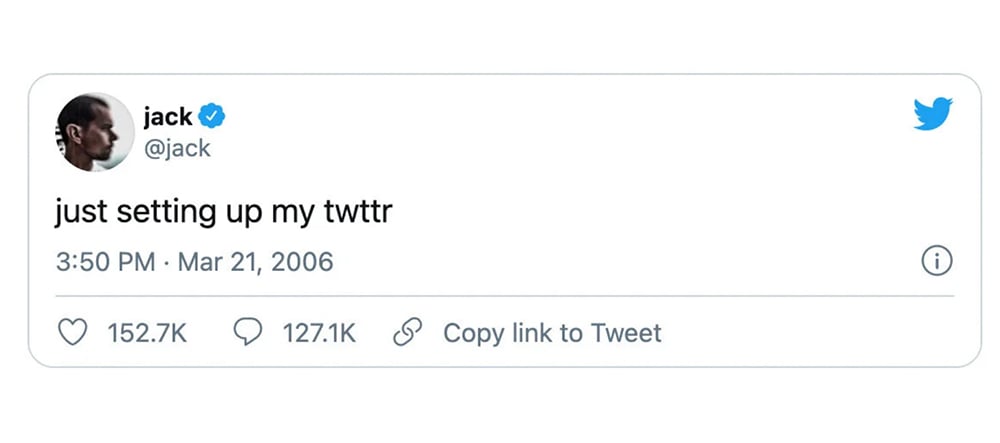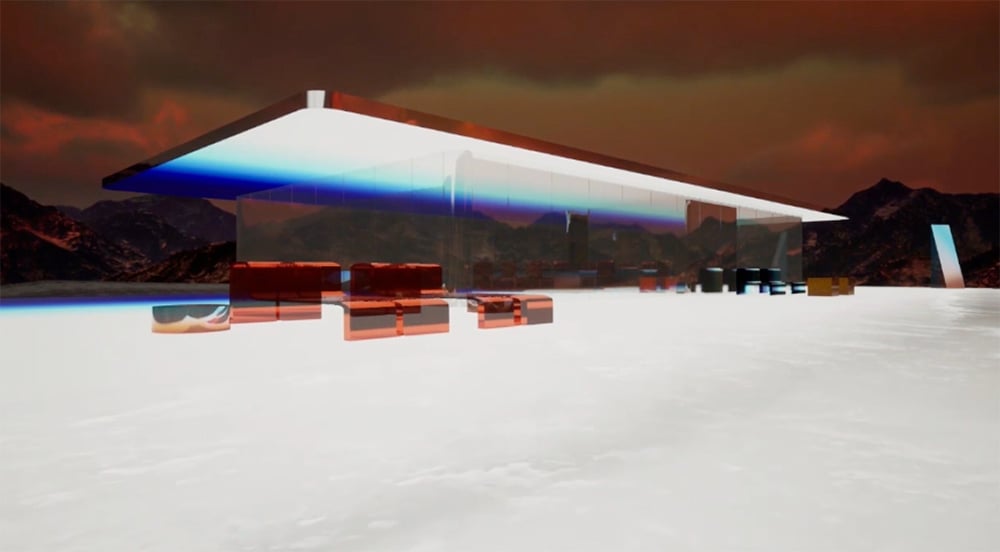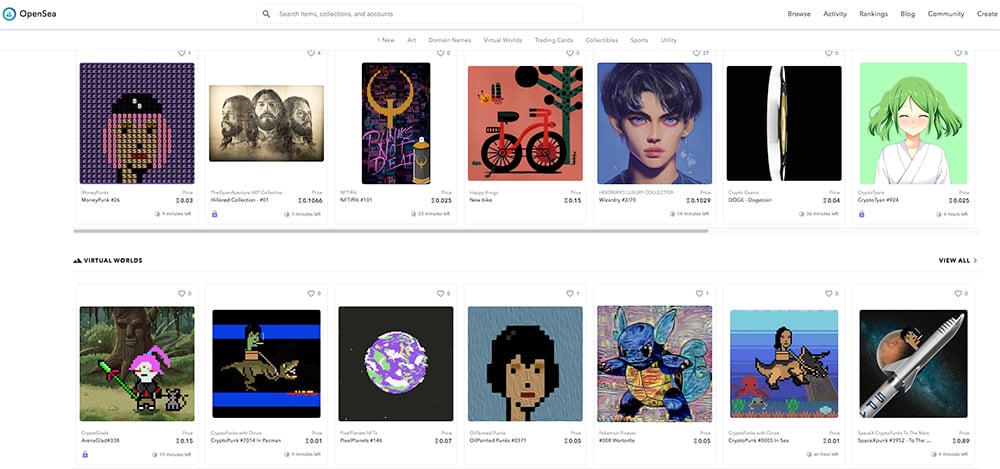Table of Contents
The technology has been around for years, but only recently has it taken off: we’re talking NFTs, in which investment in 2020 alone grew by 299%. One of the world’s biggest and most famous auction houses, Christie’s, recently sold a digital artwork by Mike “Beeple” Winkelmann – a collection of 5000 pieces of content created and uploaded over 5000 days – for a record-breaking $69 million. These 5000 artworks are completely digital, but were sold as if they were an original painting.
So what are NFTs? The acronym stands for non-fungible token and in practice NFTs are digital certificates that prove ownership of an asset thanks to the use of blockchain technology. Unlike banknotes or Bitcoin, which are interchangeable and therefore fungible, NFTs are non-fungible, unique and non-interchangeable.
Each NFT is unique and cannot be duplicated. You can of course own an image of an artwork acquired as an NFT, but in such case you don’t own the original.
Think of it this way: two pound coins are exactly the same. If one is interchanged for the other, it will have exactly the same value. This means it’s fungible. An original painting, however, is a non-fungible asset, because it’s unique, just like an NFT (albeit in physical form): someone who owns a print of the original painting obviously owns a reproduction, which means it’s not interchangeable, and, crucially, doesn’t have the same value as the original.

Basically, NFTs are a way of certifying that a digital work is original and unique: it can be a drawing, a tweet, a video, a JPEG image, a GIF and much more. Technically, they are data blocks registered on a blockchain, that is to say an encrypted file that contains the metadata which identify the owner and describe the ”work” linked to the NFT.
Thanks to blockchain technology, you can also trace the whole purchase chain of a single NFT, which has an actual “signature” from the author. The best-known NFTs are usually paid for in Ether, which is a cryptocurrency based on the Ethereum blockchain.
Anything digital can become an NFT
Just as you can create a piece of work in the form of a painting or piece of music and sell it as an original, you can do the same with an NFT: it will then be the market, in other words, the desire of someone to buy it, that will determine its value. So, anyone can create NFTs and sell them, or buy them and sell them on at a higher price, if they can find someone willing to pay more.
NFTs to suit every taste can be can be bought online: from digital figurines to so-called “CryptoKitties” (characters in a virtual collectables trading game), from illustrations to music tracks.
There’s recently been a bit of an NFT bubble, with tokens selling for prices that many would consider “crazy”. For example:
- The aforementionedartist Beeple, who sold his 5000 works for $69 million.
- Jack Dorsey, one of the founders of Twitter, sold his first tweet for $2.9 million.
- CryptoPunk #3100, one of 10,000 unique collectable characters, was sold for $7.6 million.
- The singer Grimes has sold various of her digital artworks in the form of NFTs for $6 million.
- The popular meme “Disaster Girl” was sold at auction for almost $500,000. The girl in the photo, Zoe Roth, just 4 years old when it was taken, now has a tidy nest egg.

Although these examples are of famous artists or celebrities who already have a following, NFTs can present opportunities for all creatives.
The advantages and opportunities of NFTs
The emergence of NFTs not only brings technological innovation, but also offers creatives of every stripe the chance to work directly with their audience, cutting out the middlemen and decentralising power over their works. Once they’ve grasped this, artists can:
- Connect directly with people interested in acquiring art or any other form of digital work, doing away with the whole gallery concept for exhibiting and promoting their work.
- Experiment and push the boundaries ofthedigital art world. Because it’s still inits infancy, there are lots of other formats to explore in the NFT universe.
- Receive royalties every time their work is sold to a new owner.

A real-life example: Canadian artist Krista Kim sold the world’s first digital house as an NFT for $500,000. With advances in augmented reality, this digital property could become a virtual place where people actually hang out: digital art is therefore a concept that goes beyond “static” art and actually becomes interactive.
Where and how to create and sell NFTs
So, we’ve learnt that an NFT is a new type of non-duplicatable and original digital asset whose ownership is recorded on the blockchain. But how do you buy and resell them? Well, some NFTs, like NBA Top Shot, a series of live-action figurines of the best basketball shots in history, can be purchased with a credit card. But to buy NFTs on many other platforms, you need to use some form of cryptocurrency.
Here are some platforms where you can buy and sell NFTs:
- OpenSea: this is probably the biggest NTF marketplace and it’s a sort of online gallery. Most works are auctioned, but some are also sold at a set price.
- Rarible: another very popular platform for buying and selling NFTs. Here artists can create and upload work, including music digital art and collectables.
- SuperRare: a place for artists to sell unique artworks, it describes itself as “Instagram meets Christie’s”
- Foundation: this site’s main focus is digital art.
This is just a selection of the many online NFT marketplaces.
But how are NFTs actually created? Well, there are a number of key steps to the process:
- Programs like Photoshop can be used to create digital art for “transforming” into an NFT. But it’s also possible to upload photos onto the platform: there’s no limit to your creativity.
- The next step is to get yourself a digital wallet based on Ethereum, a sort of internet banking app, but without the bank, that’s used to send and receive funds. You can, for example, use the Chrome extension MetaMask, which is recommended by the OpenSea platform.

- You then need to buy some Ether cryptocurrency: you can use various applications for this, such as Coinbase or Robinhood, as well as the previously mentioned MetaMask.
- Now you’ve set up your wallet, it’s time to go to a site like Rarible and create your own NFT. Simply upload your file in PNG, GIF, MP3 or other format up to a maximum size of 30 MB, then set the price, royalties, title and description.
- Once you’ve created your work and linked it to your wallet, you’ll have to pay a commission to sell it.
It’s still early days for NFTs: while some think they’re just a “speculative bubble”, others believe that NFTs are ushering in a renaissance digital art. Only time will tell whether this market will be a success. But in the meantime, artists of all types can start experimenting.

